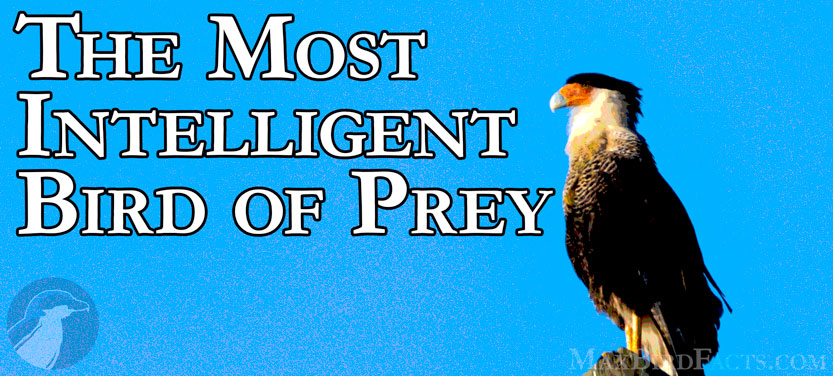When I think of birds of prey, not many instill a feeling of intelligence; yes, owls have earned a reputation as wise creatures of the deep forest. However, owls rank moderately low on the intelligence scale compared to many other avians.
Still, I believe one group of raptors is the exception to this muscle-headed motif: the Caracara. Tool use, strong social bonds, insatiable curiosity, and complex problem-solving prove the Caracara can hold its own with some of the most brainy birds.
But before we discuss the intelligence of this strange raptor, I think it is essential to understand what a Caracara is.
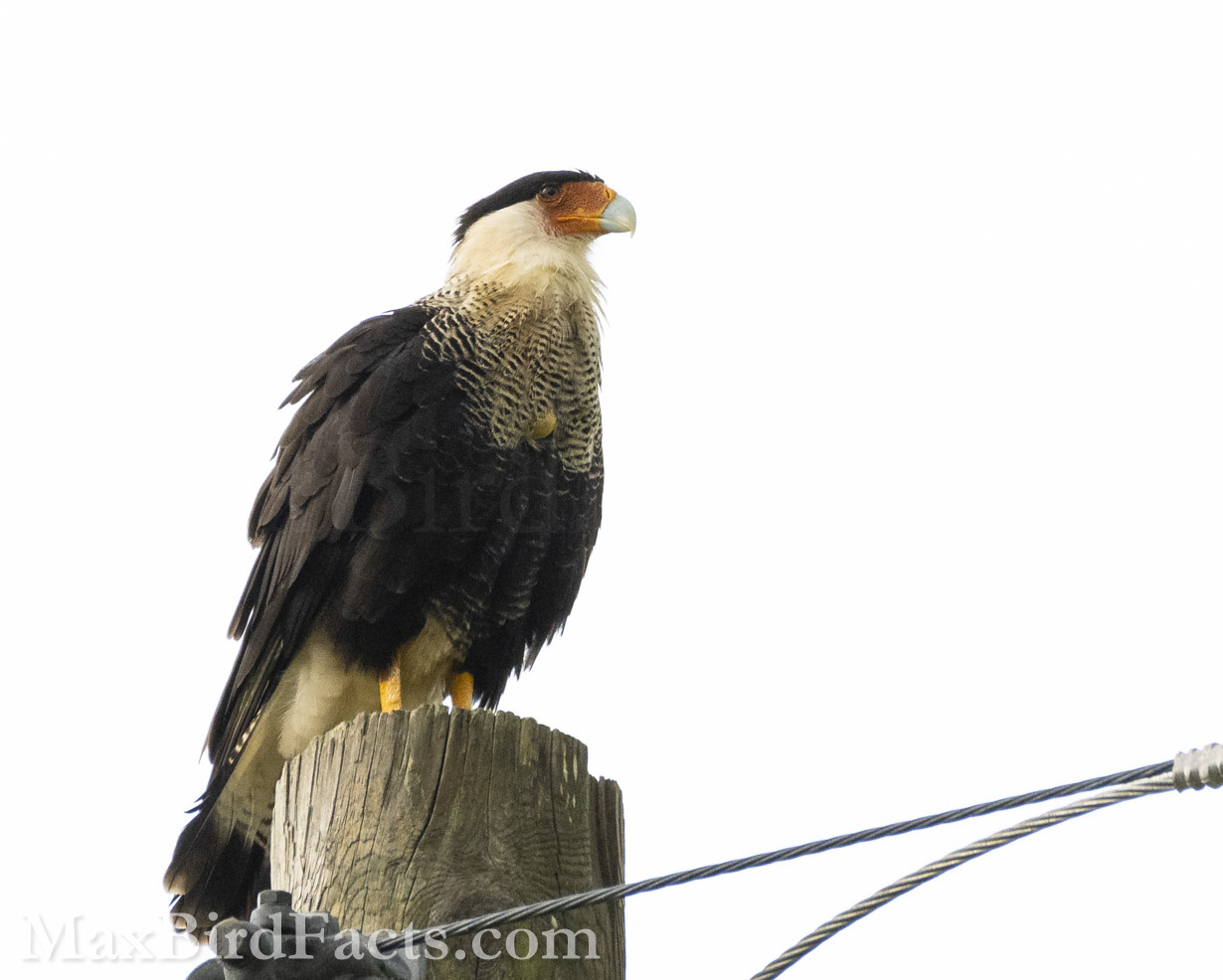
What Is A Caracara
Compared to other raptors, Caracaras are very peculiar. They fall under the order Falconiformes, making their closest relatives the falcons and kestrels. However, their lifestyles couldn’t be more different than their fighter-jet cousins.
Caracaras are extremely flexible falcons that rapidly adapt to new food sources. These birds are incredibly opportunistic and are just as happy to pick at a carcass of some unknown pile of meat baking on the side of the road for weeks as they are chasing down and tearing apart a rodent.
The appearance of these birds also differs very much from other typical falcons. Instead of sharp, narrow wings for rapid acceleration, Caracaras have broad, rounded wings perfect for long glides and the occasional fixed soaring.
Looking at a Caracara’s body, your first thought probably won’t be that this is a falcon. These raptors stand on long, thin legs and spend much of their time stalking along the earth. Its talons are also less curved than other raptors because of its affinity to strolling.
Many species of Caracara have exposed facial skin, which is typically brightly colored in reds or oranges. Match this with a stout, robust bill that can act as a multitool to gut their prey or sharpen a stick into a tool, and you have a formidable-looking falcon.
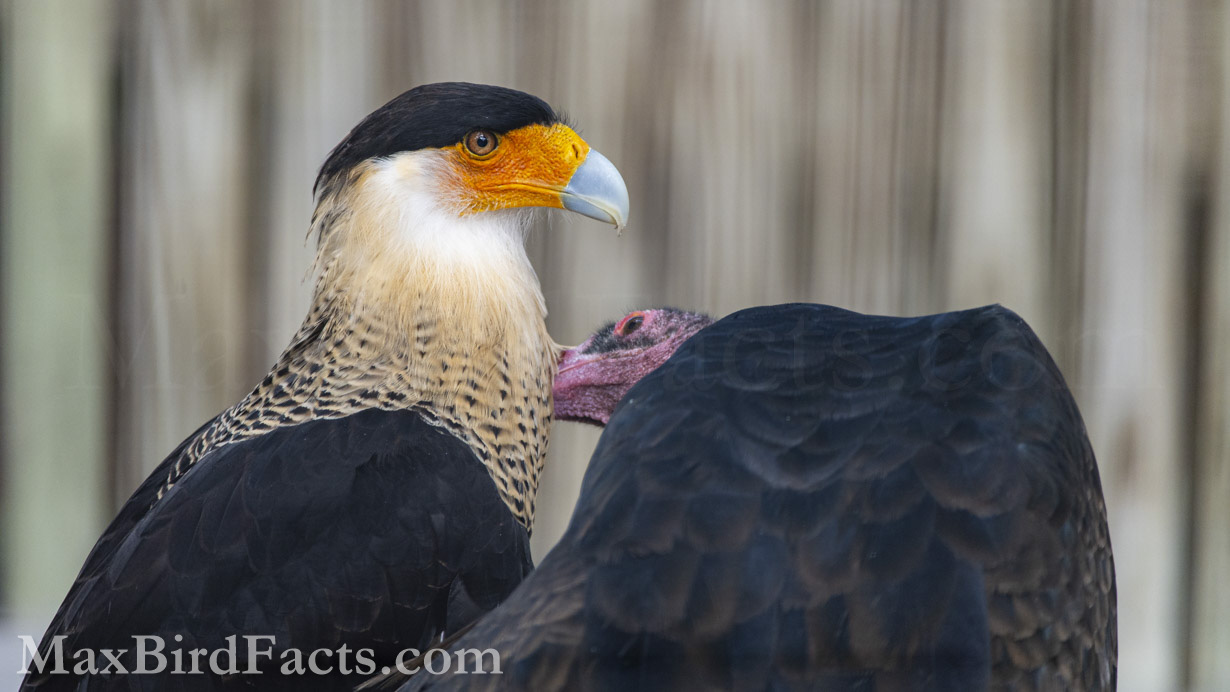
Caracaras are typically quiet birds, like most other falcons, but when they make noise, it is quite the show. Even the name Caracara comes from these birds’ rattling calls, which further cements its oddity among raptors.
There are three genera of Caracaras flying the New World skies today. The type genus Caracara and its sister Ibycter each hold one extant species, the Crested Caracara (Caracara plancus) and Red-throated Caracara (Ibycter americanus), respectively. The third genus, Daptrius, houses the widest variety of living Caracaras, seven species in total.
From the tiny Chimango Caracara (Daptrius chimango) found throughout Argentina and southern Chili to the near-threatened Striated Caracara (Daptrius australis), which we will discuss at length shortly. This genus of funky falcons varies a bit in measure and build, but overall, they are very similar in garb and preferences.
Still, all nine species of Caracaras share three key characteristics:
- Powerful intraspecific social bonds
- Extreme curiosity
- Stunning problem-solving skills
Now that we know what this bizarre bird is, let’s learn more about its behaviors.
Caracara Intelligence
The two principal species we will focus on moving forward are the Crested Caracara (C. plancus) and the Striated Caracara (D. australis) since these two have the most extensive studies and research on their behaviors and intelligence. In addition, I think these two species also show a beautiful contrast between the most widely spread species of Caracara, the Crested, and the most sheltered and regional, the Striated.
At the most basic level, the skulls and braincases of these two birds dwarf their more famous cousin, the Peregrine Falcon (Falco peregrinus). However, this difference is merely a few millimeters in each direction, and on the surface, it might not seem necessary.
Still, the dimensions of the two Caracaras are nearly identical, and both are roughly 50% larger than the Peregrine. All this extra space allows for much more powerful cognitive ability, reflected in how these birds behave.
Peregrine Falcons are the most widespread raptor, and its approach is undoubtedly successful. Soaring high above its prey, it zeros in on an unsuspecting dove, rockets down at 200 miles per hour, sucker-punches its victim with a closed foot, and delivers the killing blow with its tomial tooth. However, if the prey becomes aware of the incoming danger, the falcon has difficulty keeping chase and will likely give up.
Contrast this to the Crested Caracara faced with a tricky lizard that finds refuge in an abandoned tortuous burrow. Instead of giving up on the potential meal, the Caracara will dig out the poor lizard with its beak and talons. And if this isn’t sufficient to reach its prize, the raptor might try to jam a stick down the hole to stab the reptile or flush it out.
This might seem trivial, but for an animal to continue the attack and change tactics while hunting is a clear sign of intellect.
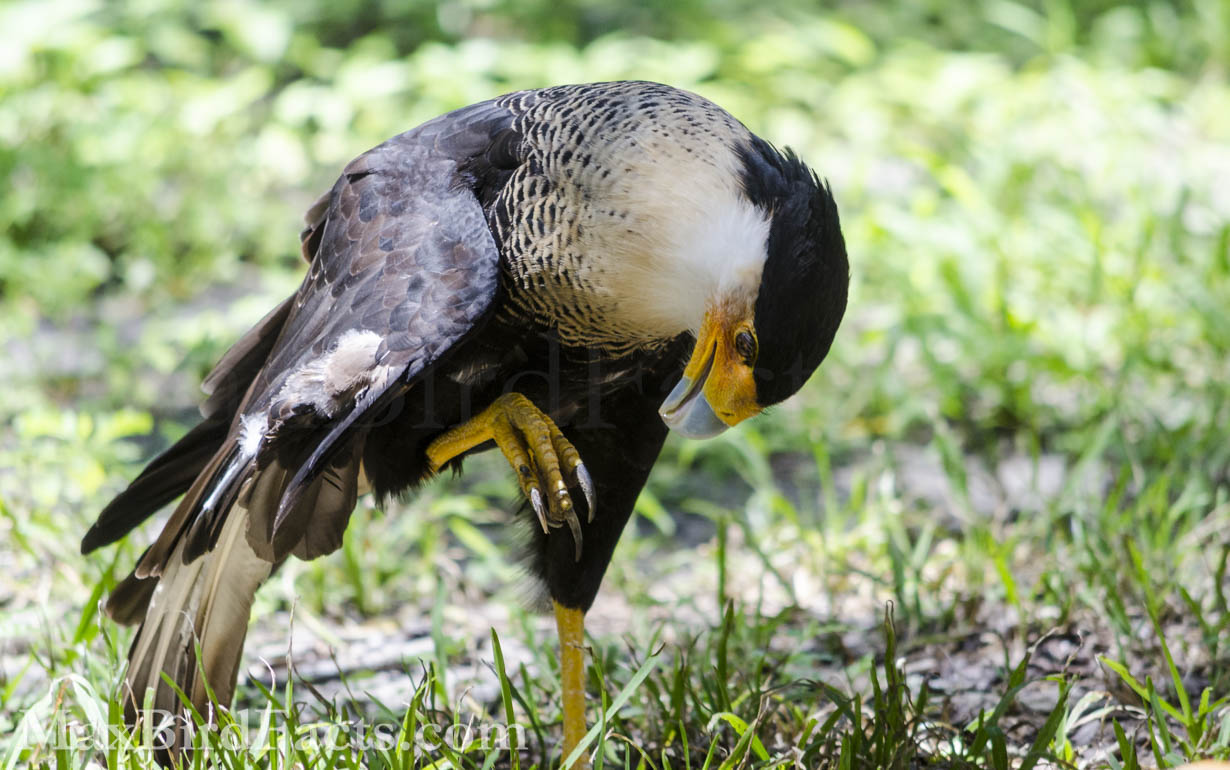
Instead of working around the problem, as the Caracara does, the Peregrine simply gives up. Granted, giving up on an ambush is likely the smartest to save energy, but the Peregrine Falcon is more of a one-trick pony in its hunting style. So rather than attempt a maneuver to cut off the escaping dove, regain altitude and try another strike, or change its target to a less adept victim, the simplest solution is to give up.
Even though the Caracara’s original plan of running down the lizard failed, it still managed to manipulate the environment to succeed. This isn’t even considering the other raptors learning from the digger. Caracara intelligence is built on generations of experiences and learning to solve problems.
Young Crested Caracaras will stay with their parents for an entire year before leaving their home territory. Over this time, these immature birds will learn to hunt, vocalize, acquire territory, defend their nests, and work around problems.
Once their parents are ready to have their next set of hatchlings, the yearling falcons will strike it out independently. This isn’t too much of an issue since there is abundant land for them to conquer throughout the Southwestern US, Mexico, and Central and South America.
Crested Caracaras have a high fidelity to their mates and their nesting site. Therefore, a pair of Caracaras will stay together, even outside the nesting season, and continually conduct pair bonding behaviors.
Alopreening (one bird preens another), giving gifts of food, and paired vocalizations help keep the Caracara couple close throughout the years. However, this behavior is irregular with falcons, who typically are monogamous but don’t spend the entire year together. Most falcons return to their nesting site to rebuild their pair bonds during the season, but most falcons separate during the nonbreeding months.
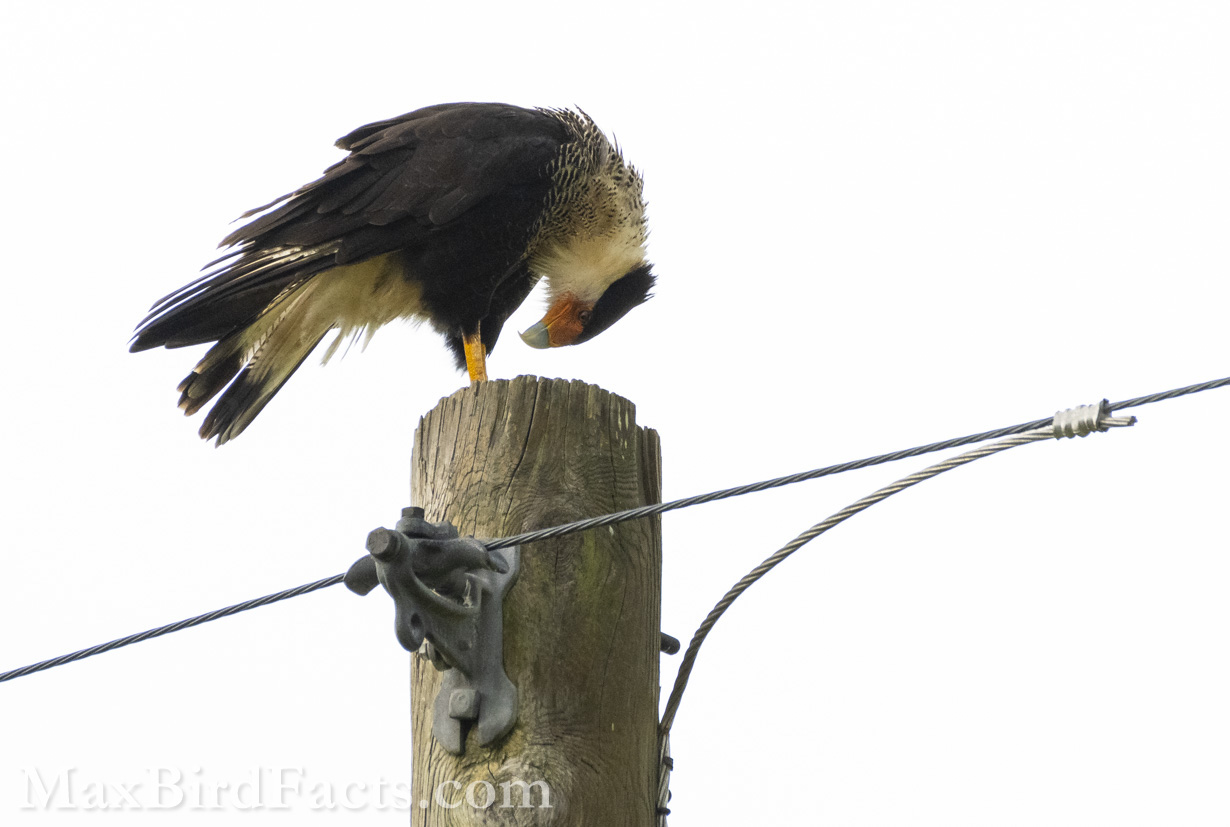
On the other hand, Striated Caracaras are primarily island-bound birds that stay near the nest for years after their development. Because of the lack of breeding sites on their remote South Atlantic islands, these raptors form powerful familial bonds, even going as far as cooperative breeding strategies.
We’ll discuss this incredible strategy more in the next section, but the isolation of the Striated Caracara is arguably the reason it is the most intelligent bird of prey. Still, cooperative breeding is an exceptionally complex behavior that absolutely demonstrates the bird’s aptitude for complex thought.
Tool use is arguably one of the factors most people would assign to an intelligent species. For decades, the thought that humans were unique among animals because of our ability to create and use tools has shattered in recent years. Yet, dozens of species across the animal kingdom have proven to reliably craft and utilize tools for specific tasks, including our Caracaras.
I think it is crucial to define what a “tool” is for our purposes. Simply put, a tool is an object or item used to complete a specific task.
With this definition in mind, a tool can be as complex as a CNC machine used to mill exact cuts on metal, or a tool can be a stone used to access a food source. And we can see Caracaras using this same tool.
Using their beaks to pick up and throw stones at penguin eggs is evident behavior of tool use and shows a great degree of complex thought and problem-solving. Using a hard rock rather than their beak to get to the nutritious yoke saves the bird energy and potential injury.
So, now that we have proven that the brain of the Caracara is, on average, much larger than their cousins, they have complex and long-lasting social bonds, can solve complex cognitive functions, and have the ability to use tools, let’s talk about the most intelligent bird of prey.

The Most Intelligent Bird of Prey, or A Most Remarkable Creature?
I would be lying if this article wasn’t partly inspired by the book A Most Remarkable Creature: The Hidden Life and Epic Journey of the World’s Smartest Birds of Prey by Jonathan Meiburg.
In his novel, Meilburg focuses on the Striated Caracara (Daptrius australis), which is a grail bird for me. This spectacular falcon is one of the most isolated species of birds of prey, residing in the southernmost tip of Argentina, but its stronghold is on the Falkland Islands.

Like many island species, the Striated Caracara had to find ways to survive in its secret ecosystem, and the key to this bird’s survival is its raw intelligence. At the heart of this intelligence is the Striated’s curiosity.
Sir Charles Darwin wrote that the Falkland Islands were “wretched” while “false eagles” harassed him and his crew. These birds stole hats and bags and picked at the rigging lines, but were curious about the mariners of the HMS Beagle.
Darwin even penned that these “flying monkeys” were “tame” and “curious,” and he could catch them simply with his hands and a net. The isolation of these birds is the most likely candidate for their comfort around these explorers, but their inquisitiveness is the key to the most intelligent bird of prey.
The curiosity that earned these birds the names “Flying Devils,” “Flying Monkeys,” and “Johnny Rooks” is how they survived on the spit of land they call home.
Striated Caracaras search for their meals in unusual places for a falcon. Turning over rocks, digging into burrows and nests, and even taking the lids off garbage bins are regular thoughts for these birds.
Seabirds and seals primarily use the islands the Striated Caracaras call home as nesting sights, not their annual residence. Nevertheless, this urge to seek out every corner of their space for what delight it could hold is how they managed to survive in an unyielding environment.
However, these resilient birds figured out that being curious and looking for food in the most unlikely of places might just mean the difference between starvation and survival.
If these islanders were as picky as their Peregrine cousins, they would surely starve. Regardless, Striated Caracaras will test nearly anything because of their inquisitiveness to see if it is edible.
Dead fish washing ashore, plastic bottles, or even a bipedal visitor’s campsite all make fascinating subjects of inquiry. Whether or not these curiosities would result in a meal is unknown, which is why the Caracaras inspect them.
Competition among members of their family or neighbors might also be a driving factor for these birds’ curiosity. Packs of dozens to up to a hundred Striated Caracaras could conglomerate around a large seal carcass so that it could be beneficial for some birds to look elsewhere for food to avoid competition or a fight.
The fascinating behaviors don’t stop there. As discussed briefly in the previous section, Striated Caracaras are among the 3.2% of living avian species that utilize cooperative breeding, possibly the only bird of prey to do so.
Cooperative breeding is where a young bird will help its parents raise its siblings rather than leave to have its own family. This might seem counterintuitive for an animal to give up its ability to reproduce and spread its genes into the population, which is the primary goal of life.
However, because of the lack of usable breeding sites, small overall population sizes, and inconsistent food supplies, it is far more beneficial for younger Striated Caracaras to stay home than to move out.
Further, on a genetic aspect, siblings share 50% of their genome, so it is in the interest of the cooperative Caracara to stay and help get 50% of its genes into the population rather than 0% if it cannot find the requirements to make its own family.
Cooperative breeding is a behavior seen in some of the most intelligent species on Earth. One of which, the Florida Scrub-Jay (Aphelocoma coerulescens), is arguably one of the most brilliant birds in North America.
Like the Striated Caracara, Florida Scrub-Jays live in extremely patchy ecosystems that act as their own islands throughout Central Florida. Because of their limited territories and resources, Scrub-Jays utilize cooperative breeding strategies to increase the genetic success of their parents and, in part, their own success as well.
If you’d like to learn more about Florida Scrub-Jays or are interested in learning more about cooperative breeding, you should check out my article Scrub-Jay Intelligence – Proving Being “Bird-Brained” is a Compliment by selecting the banner below!
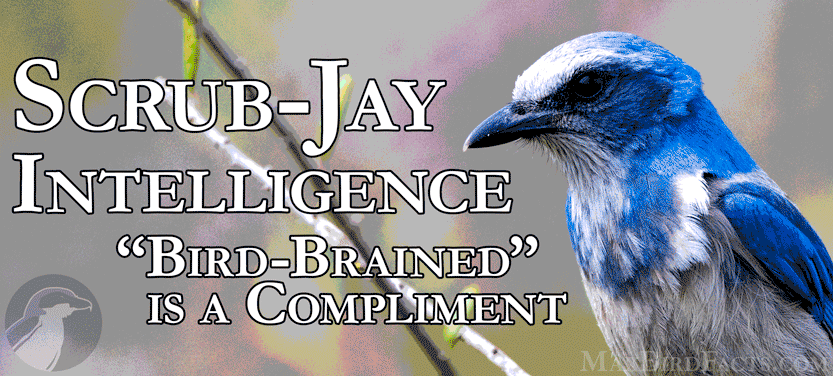
The other benefit to cooperative breeding is that bird will likely inherit its parents’ territory. But unfortunately, because these birds live on just 4,700 square miles, about the size of Connecticut, there is not enough space to sustain many breeding sites for the Caracaras.
Currently, roughly 1,000 Striated Caracaras form 500 breeding pairs, so staying home to inherit their parents’ nesting grounds is one way to secure a suitable location for the future.
Now it might make sense that the older siblings would stay behind and help their siblings. With a near guarantee of 50% of their genes spreading into the population through their siblings and a proven territory in the future, why wouldn’t they stay?
Cooperative breeding is one of the most evident signs of Caracara intelligence. This strategy involves thinking for the future of the older sibling and the parents, proving the sociality of these birds.
Striated Caracaras are indeed the most intelligent bird of prey on Earth. Their curiosity easily rivals that of an ape or raven, and their cooperative breeding strategy verifies how social and complex these raptors’ behavior is.
However, if you live in the States, you don’t have to travel to the southern tip of the New World to see this astonishing behavior taking root.
Florida Crested Caracara
Like the Striated Caracara of the Falkland Islands, a population of Crested Caracaras has become sequestered in South Central Florida.
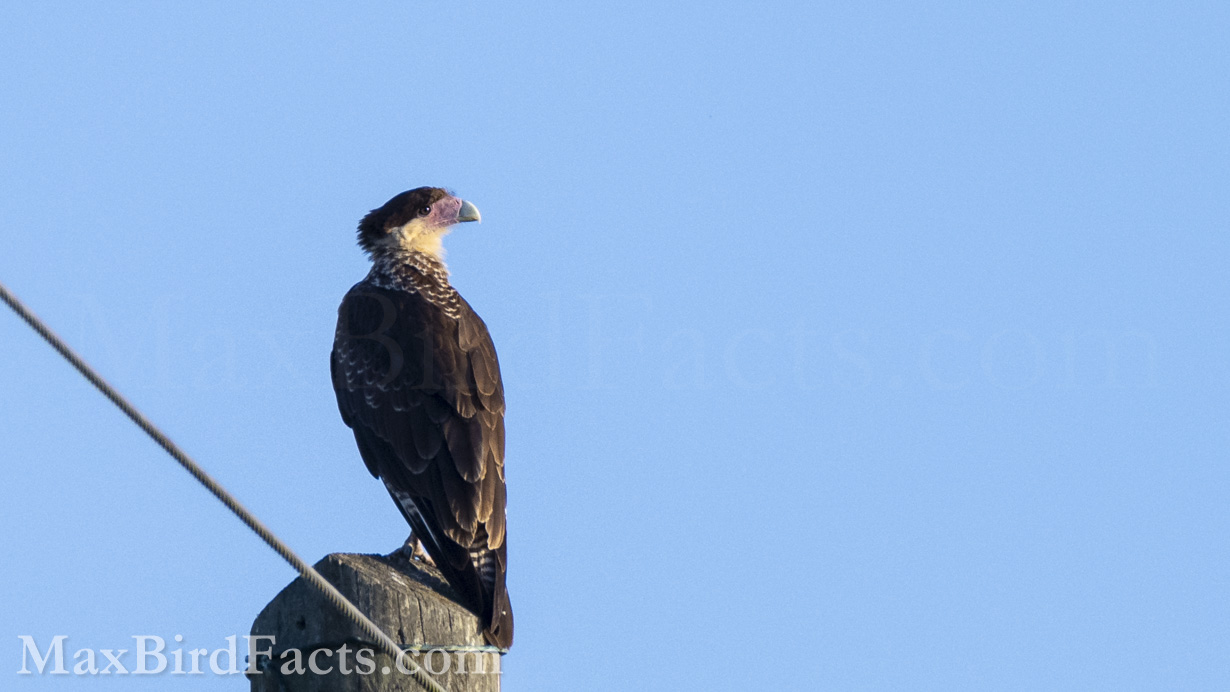
Even though these birds could fly out of their primary ranges in Florida, they seem content on their own “islands.” Florida’s Crested Caracaras, also called Audubon’s Crested Caracara, were abandoned in our state over 12 thousand years ago, at the end of the Pleistocene (the most recent Ice Age).
The reason for their isolation is the Florida Crested Caracara’s dependence on its ancient grassland ecosystem. The archaic relatives of Florida’s Caracaras followed the mastodons, ground sloths, and other prehistoric North American megafauna into the savannahs of what is now South Central Florida.
As these species began to die off due to changing ecosystems, climates, and resources, the Caracaras that followed them were abandoned. Thankfully, for the falcon’s sake, they readily transitioned from feasting on rotting mastodon to alligator tail.
Over the next several thousand years, the Florida Caracaras became increasingly isolated from their relatives in Central and South America. And as a result, their behaviors started drastically changing from their cousins.
Like the Striated Caracara, the Florida Crested Caracara is becoming more tightly bound by familial bonds. The spacing between nesting sites in the Floridian falcons is 60% closer than those outside the Sunshine State.
Further, the yearlings from Florida Caracara nests stay increasingly longer with their parents. If the Florida birds remain isolated, this could quickly shift into full cooperative breeding.
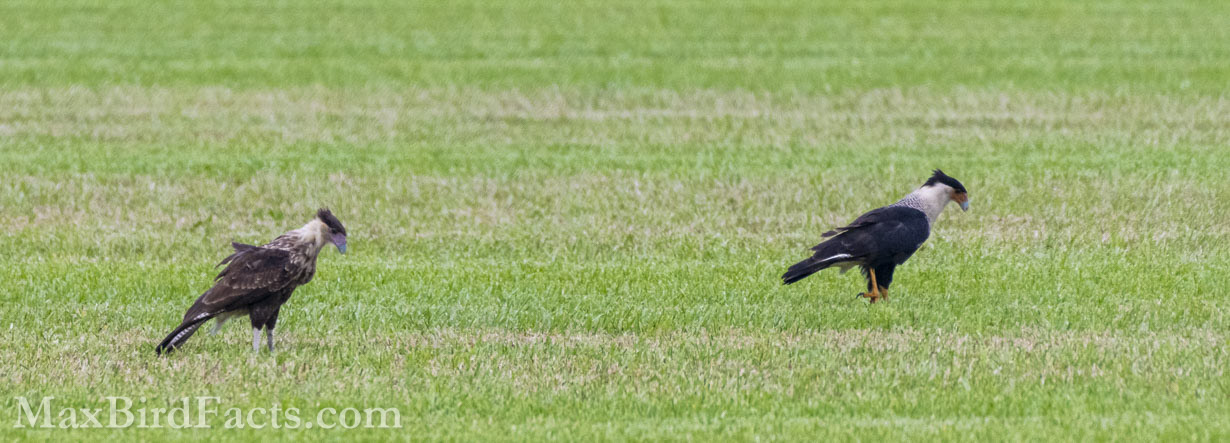
However, as the roads leading between the preliminary source of Crested Caracaras in the south connect to more routes in the US, it’s becoming very likely that these southern birds will meet their Florida cousins. This isn’t due to trafficking the falcons from Central and South America into North America; it has to do with road kill.
For the same reasons the Florida Caracaras followed the paths of the dying Ice Age megafauna, the modern Crested Caracaras are tracking the dead deer, raccoons, and squirrels on the sides of the road.
As I said earlier, Caracaras are highly opportunistic and flexible with their diets. So, if they start to think there is free food just waiting for them to gobble it up, they will find it. Moreover, a roadway is hugely convenient for a soaring bird to follow while looking for carrion.
This spread wouldn’t be a wholly bad thing. Colonizing Crested Caracaras from the Southwest could help bring new genetic material for the Florida Caracaras. Yes, this would mean losing the uniqueness that twelve thousand years of isolation has created, but it could also help strengthen the populations in Florida.
Be that as it may, the behavioral changes in the isolated Florida Caracaras might just be enough to separate them from these newcomers. Unfortunately, only time will tell once these two populations link back up if they merge into a solidified empire of Crested Caracaras throughout the New World or remain divided into their distinctive subspecies populations.
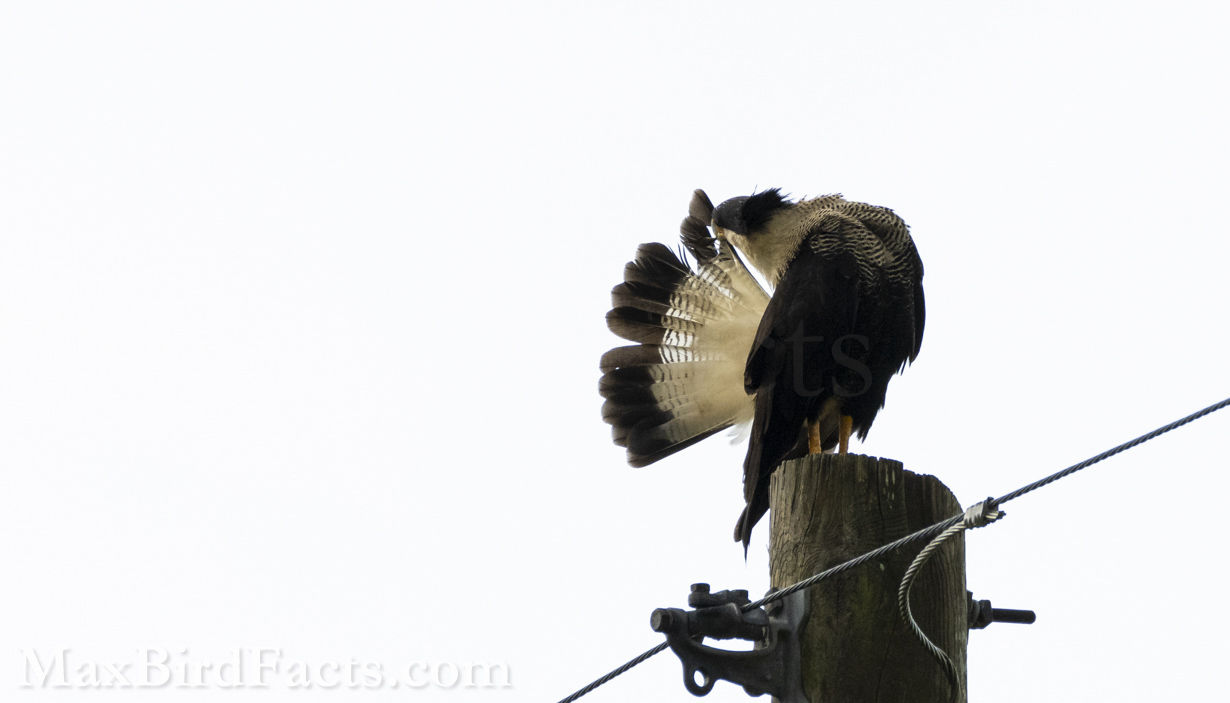
Now We Know The Most Intelligent Bird of Prey
I’ve often used the term “raptor” regarding the Caracara, and I think it might be the closest bird to match the general public’s concept of a “raptor.” When the typical person thinks of a “raptor,” they probably think of Jurassic Park’s depiction of a Velociraptor.
Yes, their rendition of the Velociraptor is downright inaccurate; however, I think Caracaras are the closest living thing to living Velociraptors. Packs of Caracaras working together to chase down a squirrel could mirror a throng of Velociraptors hunting down some Late Cretaceous reptile 75 million years ago.
Regardless, the Caracara’s intelligence is unmistakable. From their ability to adapt and search for food where no other bird of prey would to their year-long relationships, Caracaras are truly remarkable birds.
We’ve discussed how their social bonds define their behavior in their environments. From yearling Creasteds leaving their Southwestern nests to find their own territories to the Floridian falcons that hang around a few extra years to help raise their siblings.
This push towards a more social species indicates a remarkable level of cognitive function. These young birds understand it is in their best interest to help their siblings reach maturity rather than try, and likely fail, at raising their own young.

The cost of a few years of helping their parents comes with the reward of a more prominent genetic representation in their populations and a near guarantee of a successful nesting site in their future.
Tool use, one of the most socially accepted methods to gauge animal intelligence, is also apparent among Caracaras. From throwing rocks at eggs to shatter their shell to using the quill of a feather to scratch a hard-to-reach itch, Caracaras manipulate their environment to work for them.
Further research needs to be conducted to fully understand the mind of the Caracara and get a complete understanding of Caracara intelligence.
Still, the most intelligent bird of prey is undoubtedly the Caracara.
I hope you enjoyed learning all about the most intelligent bird of prey and Caracara intelligence!
If you have ideas or suggestions for topics you would like me to write about in the future, feel free to leave a comment below or shoot me an email!
If you enjoyed this article and want to stay up to date when I post the next one, sign up for my email list!

Get Outside & Happy Birding
Max
Discover more from Welcome to MaxBirdFacts.com!!!
Subscribe to get the latest posts sent to your email.
